This article was medically reviewed by Erik Kramer, DO, MPH. Dr. Erik Kramer is a Board-Certified Primary Care Physician at the University of Colorado. With over 15 years of experience, his clinical interests include obesity and weight management, diabetes care, and preventive care, as well as embracing a holistic approach to primary care. He received his Doctorate in Osteopathic Medicine (D.O.) from the Touro University Nevada College of Osteopathic Medicine and completed his residency at Central Maine Medical Center. Dr. Kramer is a Diplomate of the American Board of Obesity Medicine.
There are 11 references cited in this article, which can be found at the bottom of the page.
This article has been viewed 175,456 times.
Although it’s best for someone who’s certified in first aid to perform CPR (cardiopulmonary resuscitation), even someone who isn’t trained can make a difference in an emergency. If you think a child’s heart has stopped, perform basic CPR techniques, such as chest compression, airway opening, and rescue breathing. If you are not formally trained in CPR, it is recommended that you use compression only. Just keep in mind that the methods in this article are intended for children. For babies under 1 year of age, follow infant CPR protocol. For adults, follow adult protocol.
Steps
Assessing the Situation
-
1Check the scene for danger before helping. If you come across a child who is unconscious, you need to quickly make sure there are no dangers to yourself if you choose to help them. Is there a car exhaust running? Are there dangerous fumes? Is there a fire? Are electrical lines down? If there is anything that could endanger you or the victim, see if there is something you can do to counteract it. Open a window, turn off the stove, or put out the fire if possible.[1]
- However, if there is nothing you can do to counteract the danger, move the victim. The best way to move the victim is by placing a blanket or a coat underneath their back and pulling on the coat or blanket.
- If there is a chance the child has suffered a spinal injury, 2 people should move them to prevent any twisting of the head and neck.[2]
- If you don’t think you can get to the child without putting your own life in danger, call emergency services and wait for help.
-
2Check the child for consciousness. Tap their shoulder and say in a loud, clear voice, "Are you okay? Are you okay?" If they respond, they are conscious. They may have just been sleeping, or they could have been unconscious. If it still appears to be an emergency situation—for example, if they are having trouble breathing or they appear to be fading in between consciousness and unconsciousness—call for help and begin basic first aid.[3]
- Use the child’s name, if you know it. For example, say, “Kim, can you hear me? Are you okay?”
- If necessary, take measures to prevent or treat shock. The child may be in shock if you notice symptoms such as clammy skin, rapid breathing, or a grey or blue tint to their lips or fingernails.[4]
Advertisement -
3Feel for the child’s pulse. If the child is unresponsive, the first thing to do is check their pulse. If the child does not have a pulse, you need to begin CPR immediately. Do not check their pulse for more than 10 seconds. If the victim does not have a pulse, their heart is not beating and you will need to perform chest compressions.[5]
- To check the neck (carotid) pulse, feel for a pulse on the side of the victim's neck closest to you by placing the tips of your first 2 fingers beside their Adam's apple. Be aware that the Adam's apple is usually not visible on a girl, and may not be very visible on a boy who has not yet gone through puberty.
- To check the wrist (radial) pulse, place your first 2 fingers on the thumb side of the victim's wrist.
- Other pulse locations are the groin and ankle. To check the groin (femoral) pulse, press the tips of 2 fingers into the middle of the groin. To check the ankle (posterior tibial) pulse, place your first 2 fingers on the inside of the ankle.
-
4See if the child is breathing. Even if the child has a pulse, you’ll still need to do CPR if they aren’t breathing. Lay them flat on their back, if you can move them safely. Then, tilt their head back slightly and lift their chin. Put your ear close to their nose and mouth and listen for sounds of breathing for no more than 10 seconds. If you don’t hear breathing, get ready to perform CPR rescue breaths.[6]
- If you hear occasional gasps, this still isn’t considered normal breathing. You’ll still need to perform CPR if the child is gasping for breath.
-
5Begin CPR as quickly as possible. If you see someone whose heart has stopped beating or who has stopped breathing, reacting quickly and performing rescue breathing and CPR could save their life. When someone starts CPR before an ambulance arrives, the patient has a considerably better chance of surviving. [7] Being able to respond quickly by performing CPR, which can help get oxygenated blood back flowing to the brain, is essential.
- If the child has a pulse but is not breathing, only perform rescue breathing, not chest compressions.
- A human brain can typically go for around 4 minutes without oxygen before suffering permanent brain damage.
- If the brain goes without oxygen for between 4 and 6 minutes, the chances of brain damage rise.
- If the brain lacks oxygen for 6 to 8 minutes, brain damage is probable.
- If the brain is without oxygen for over 10 minutes, brain death is probable.[8]
Performing CPR
-
1Perform CPR for 2 minutes before calling for help. Once you have quickly assessed the situation and checked the consciousness and circulation of the victim, you need to act very quickly. If there is no pulse, you must begin CPR immediately, and continue it for 2 minutes (which is about 5 cycles of CPR). Then, call for Emergency Medical Services.[9] If you are alone, it is important to start CPR before calling for help.
- If someone else is there, ask them to call emergency services or send them for help. If you are alone, do not call until you have completed 2 minutes of CPR.[10]
- Dial your local emergency number. Call 911 in North America, 000 in Australia, 111 in New Zealand, 112 by cell phone in the EU (including the UK) and 999 in the UK.
- If possible, send someone else to get an AED (Automatic External Defibrillator) if there is one in the building or nearby.
-
2Remember CAB. CAB is the basic process of CPR. It stands for Chest Compressions, Airway, Breathing. In 2010, the recommended sequence changed with chest compressions placed before airway opening and rescue breathing. Chest compressions are more critical for correcting abnormal heart rhythms (ventricular fibrillation or pulseless ventricular tachycardia), and because one cycle of 30 chest compressions only requires 18 seconds, airway opening and rescue breathing are not significantly delayed.
- Chest compressions, or hands-only CPR, is recommended if you have not been properly trained or are worried about performing mouth-to-mouth resuscitation on a stranger.[11]
-
3Position your hands over the child’s sternum (breastbone). When performing CPR on a child, the positioning of your hands is especially important, given that a child will be more fragile than an adult. Locate the child's sternum by moving 2 fingers to the bottom of their rib cage. Identify where the lower the ribs meet in the middle and then place the heel of your other hand on top of your fingers. Just use the heel of this hand to do the compressions.
-
4Perform 30 compressions. Compress the chest, with your elbows locked, by pushing straight down about 2 inches (5.1 cm) deep. The smaller body of a child needs less pressure than an adult’s would. If you begin to hear or feel a cracking sound, that may indicate that you are pushing too hard. Continue, but apply less pressure with the compressions. Do 30 of these compressions, and do them at a rate of at least 100 compressions per minute if you are the only rescuer.
- Allow complete chest recoil after each compression. In other words, wait for the chest to expand completely before you push down again.[12]
- Minimize pauses in chest compression that occur when changing providers or preparing for a shock. Try to limit interruptions to less than 10 seconds.
- If there are 2 rescuers, each should complete a round of 15 compressions. If you’re doing rescue breaths as well as compressions, do 2 breaths for every 15 compressions instead of every 30 compressions.
-
5Make sure the airway is open. Place your hand on the child’s forehead and 2 fingers on their chin. Lift the chin gently with the 2 fingers while carefully pushing down on the forehead with your other hand. If you suspect a neck injury, gently pull the jaw upward rather than lifting the chin.[13] Once you have done this you should look, listen, and feel for breathing.
- Put your ear close to the victim's mouth and nose and listen carefully for any signs of breathing.
- Watch for chest movement and feel for any breath on your cheek.[14]
- If there are no signs of breathing, place a CPR breathing barrier or rescue mask (if available) over the victim's mouth.
-
6Give 2 rescue breaths if the child isn’t breathing. Keeping the airway open, take the fingers that were on the child’s forehead and pinch their nose closed. Make a seal with your mouth over the victim's mouth and breathe out through your mouth for about one second. Make sure you breathe slowly, as this will make sure the air goes in the lungs and not the stomach. Make sure you keep your eye on the victim's chest.[15]
- If the breath goes in, you should see the chest slightly rise and also feel it go in. If the breath goes in, give a second rescue breath.
- If the breath does not go in, reposition the head and try again.[16] If it does not go in again, the victim may be choking. You'll need to do more chest compressions in this case. Keep in mind abdominal thrusts (the Heimlich maneuver) should only be performed on someone who is conscious.
-
7Repeat the cycle of 30 chest compressions and 2 breaths. Do CPR for 2 minutes (5 cycles of compressions to breaths) before checking for signs of life, a pulse, or breathing. Continue CPR until someone takes over for you; emergency personnel arrive; you are too exhausted to continue; an AED is attached, charged, and the person running it asks you to clear the body; or pulse and breathing return.[17]
- Don't forget to call the emergency services after the first 2 minutes of CPR.
- After you call them, continue to administer CPR until they arrive.
- If you’re working with a second rescuer, cut the number of compressions per 2 breaths in half. That is, one of you should do 15 compressions, followed by 2 breaths, then the other person should perform another 15 compressions and 2 breaths.
-
8Use an AED to restart their heart if necessary. If an AED becomes available, turn on the AED, then place the pads as instructed (one over the right chest and another over the left side). Allow the AED to analyze the rhythm, and give one shock if indicated, after clearing everyone from the patient (yell "CLEAR!" first). Resume chest compressions immediately after each shock for another 5 cycles before reassessing.[18]
- If the victim begins breathing, gently maneuver them them into the recovery position.
Expert Q&A
-
QuestionWhat is the most common complication of CPR?
 Jonas DeMuro, MDDr. DeMuro is a board certified Pediatric Critical Care Surgeon in New York. He received his MD from Stony Brook University School of Medicine in 1996. He completed his fellowship in Surgical Critical Care at North Shore-Long Island Jewish Health System and was a previous American College of Surgeons (ACS) Fellow.
Jonas DeMuro, MDDr. DeMuro is a board certified Pediatric Critical Care Surgeon in New York. He received his MD from Stony Brook University School of Medicine in 1996. He completed his fellowship in Surgical Critical Care at North Shore-Long Island Jewish Health System and was a previous American College of Surgeons (ACS) Fellow.
Board Certified Critical Care Surgeon The most common complication of CPR is rib fractures, which are more common in older patients than in children.
The most common complication of CPR is rib fractures, which are more common in older patients than in children.
Warnings
- Be sure to survey the scene for danger before you attempt to administer CPR.⧼thumbs_response⧽
- Remember that CPR is different for adults, children, and infants; the CPR described in this article is meant to be administered to a child.⧼thumbs_response⧽
- If possible, wear gloves and use a breathing barrier to make transmission of diseases less likely.⧼thumbs_response⧽
- Do not move the patient unless they are in immediate danger or are in a place that is life-threatening (for example, if they’ve collapsed in the middle of a road).⧼thumbs_response⧽
- If the person has normal breathing, coughing, or movement, do not begin chest compressions. Doing so may cause the heart to stop beating. [19]⧼thumbs_response⧽
References
- ↑ https://www.redcross.org/take-a-class/first-aid/performing-first-aid/first-aid-steps
- ↑ http://www.nlm.nih.gov/medlineplus/ency/article/000013.htm
- ↑ https://www.redcross.org/take-a-class/first-aid/performing-first-aid/first-aid-steps
- ↑ https://www.mayoclinic.org/first-aid/first-aid-shock/basics/art-20056620
- ↑ http://www.firstaidweb.com/child1.php
- ↑ https://www.redcross.org/take-a-class/cpr/performing-cpr/child-baby-cpr
- ↑ http://www.nlm.nih.gov/medlineplus/ency/article/000013.htm
- ↑ http://www.firstaidweb.com/cpr.php
- ↑ http://www.firstaidweb.com/child.php
- ↑ http://www.nlm.nih.gov/medlineplus/ency/article/000013.htm
- ↑ http://www.nhs.uk/Conditions/Accidents-and-first-aid/Pages/CPR.aspx
- ↑ http://www.nlm.nih.gov/medlineplus/ency/article/000013.htm
- ↑ http://www.mayoclinic.org/first-aid/first-aid-spinal-injury/basics/art-20056677
- ↑ http://www.nlm.nih.gov/medlineplus/ency/article/000013.htm
- ↑ https://medlineplus.gov/ency/article/000013.htm
- ↑ http://www.mayoclinic.org/first-aid/first-aid-cpr/basics/art-20056600
- ↑ http://www.nlm.nih.gov/medlineplus/ency/article/000013.htm
- ↑ http://www.nlm.nih.gov/medlineplus/ency/article/000013.htm
- ↑ http://www.nlm.nih.gov/medlineplus/ency/article/000013.htm
About This Article
If you come across a child who appears to be unconscious, call emergency services immediately. Then, check the child’s pulse by placing the tips of your first two fingers beside their Adams apple. If there is no pulse or the victim is not breathing, perform CPR right away and continue for two minutes. To do CPR, remember the acronym “CAB,” which stands for Chest Compressions, Airway, and Breathing. For chest compressions, place your hands on the child’s sternum, lock your elbows, and push straight down. Do 30 compressions rapidly at a rate of 100 compressions per minute. Then, make sure the child’s airway is open by lifting the chin gently and pressing down on the forehead, listening for breaths. Next, pinch the victim’s nose closed and breathe into their mouth for about one second. Repeat this cycle for 2 minutes before checking again for a pulse. For more information from our Medical co-author, like how to use an AED, keep reading!

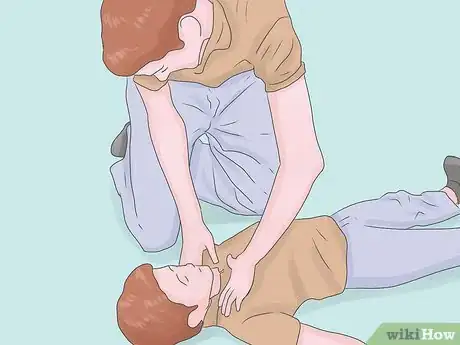
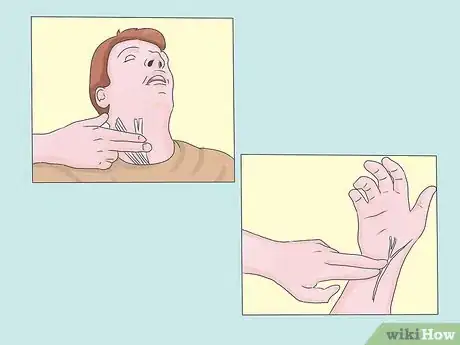

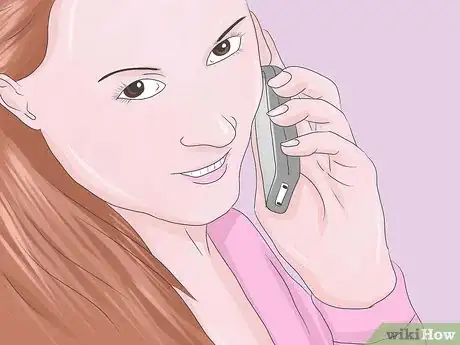
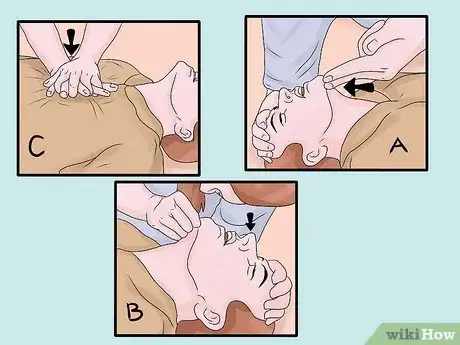
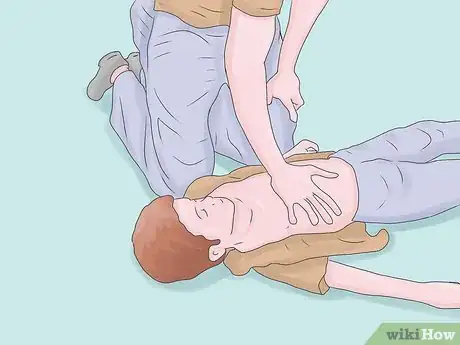
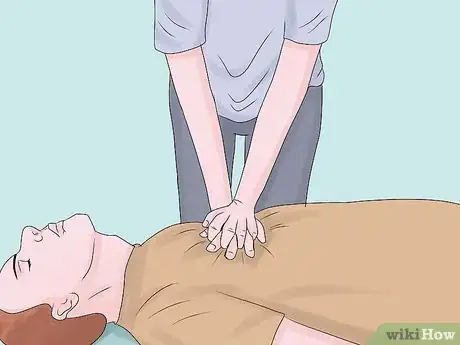
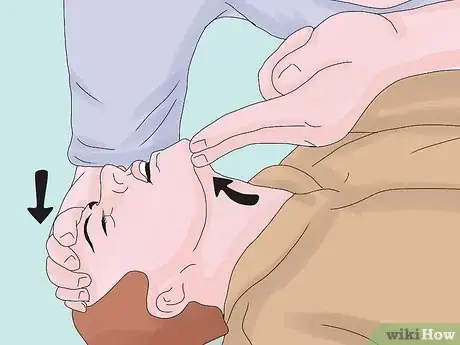
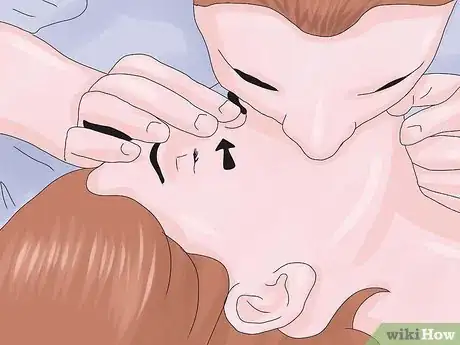
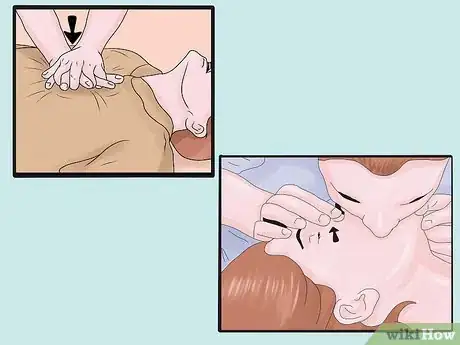
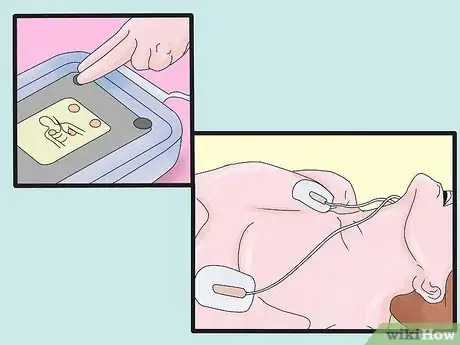




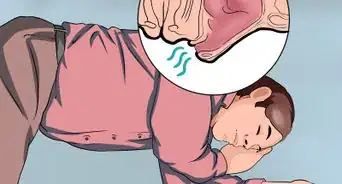





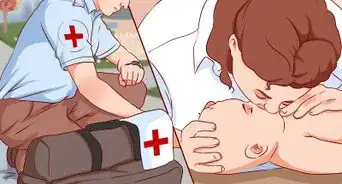












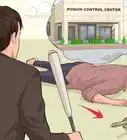
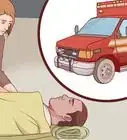
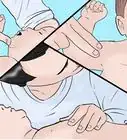





































Medical Disclaimer
The content of this article is not intended to be a substitute for professional medical advice, examination, diagnosis, or treatment. You should always contact your doctor or other qualified healthcare professional before starting, changing, or stopping any kind of health treatment.
Read More...